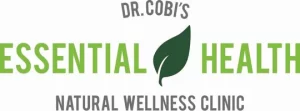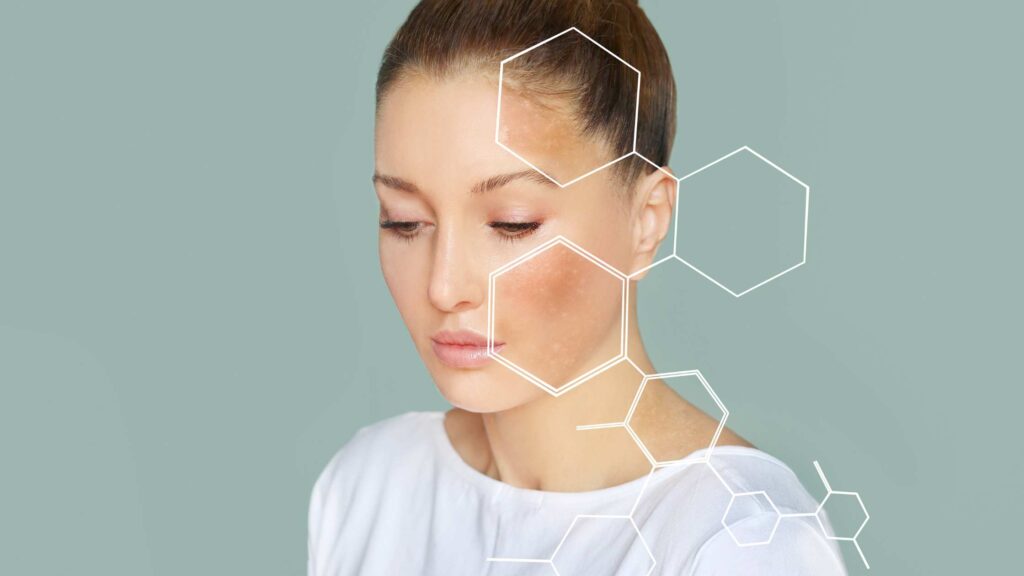Your skin is not just a barrier—it’s a mirror. When it flares up with acne, eczema, rosacea, or psoriasis, it’s often a reflection of what’s going on inside the gut. Inflammation, microbial imbalance, food sensitivities and detox overload in the gut can manifest externally as skin conditions. Healing from the inside out is the only path to truly radiant, resilient skin.
If your skin is flaring up, your body is trying to tell you something.
Whether it’s persistent acne, inflamed eczema, or unpredictable rosacea—chronic skin issues are often a symptom of deeper dysfunction in your gut. Topical creams may provide temporary relief, but true healing happens when we correct the internal imbalance driving the inflammation.
Gut-Skin Disruptors You May Not Know About:
- Leaky Gut (Increased Intestinal Permeability)
When the gut lining becomes compromised, undigested food particles and toxins can leak into the bloodstream, triggering immune responses and systemic inflammation—including the skin. This is one of the most common causes of skin conditions and is easily corrected. - Dysbiosis
This imbalance between beneficial and harmful bacteria can reduce microbial diversity, impair immune function, and contribute to inflammatory skin conditions. It often coincides with bloating, IBS symptoms, or food intolerances. - Candida or Yeast Overgrowth
Candida albicans is a yeast that can thrive when gut bacteria are suppressed (e.g., after antibiotics). It produces toxins that exacerbate skin rashes, acne, and brain fog. - Impaired Bile Flow & Detoxification
When your liver and gallbladder aren’t efficiently removing toxins, your skin often picks up the slack—leading to acne, rashes, or dullness. - Food Sensitivities
Common culprits like dairy, gluten, soy, and eggs can trigger skin flares by fueling inflammation, especially when combined with leaky gut.
Functional Tests That Reveal the Root Cause:
- GI-MAP Stool Test: Measures bacteria (both good and bad), parasites, H. pylori, candida, inflammation (e.g., calprotectin), and leaky gut markers (zonulin).
- Food Sensitivity Panel (IgG/IgA): Identifies delayed immune reactions to common foods.
- Organic Acids Test (OAT): Shows yeast/bacterial overgrowth, oxalates, nutrient absorption, and detox capability.
- Liver & Bile Labs + Stool pH: Evaluates how well the body is eliminating waste and balancing gut pH.
True Skin Healing Approach: Internal + Topical
- Remove Triggers
Cut out reactive foods, clear gut infections, and reduce toxin exposure (chemical laden cosmetics, plastics, pesticides). - Restore Gut Integrity
Use nutrients like glutamine, zinc carnosine, collagen, DGL, aloe vera, and marshmallow root to rebuild the gut lining. - Replenish the Microbiome
Introduce high-quality probiotics, fermented foods, and prebiotic fiber. Diversity matters here. - Support Detox Pathways
Nutrients like NAC, milk thistle, bitters, and magnesium help your liver and lymph eliminate waste. - Nourish Skin From Within
Supplement with zinc, omega-3s, quercetin, vitamin A, and polyphenol-rich foods (berries, green tea). - Smart Topical Care
Use natural, non-toxic products that calm inflammation, such as:- Manuka honey cream (antimicrobial, healing)
- Licorice Cream (soothing, anti-inflammatory)
- Tallow salves
- Tea tree and Frankincense oil (spot treatment, antimicrobial—for some skin types)
You deserve to feel confident in your skin. Let’s stop chasing symptoms and start healing at the root.
📅 Book your Gut-Skin Review with Dr. Cobi: www.drcobi.com/booking
🌿 Glowing skin is an inside job. Let’s clear things up—naturally.

